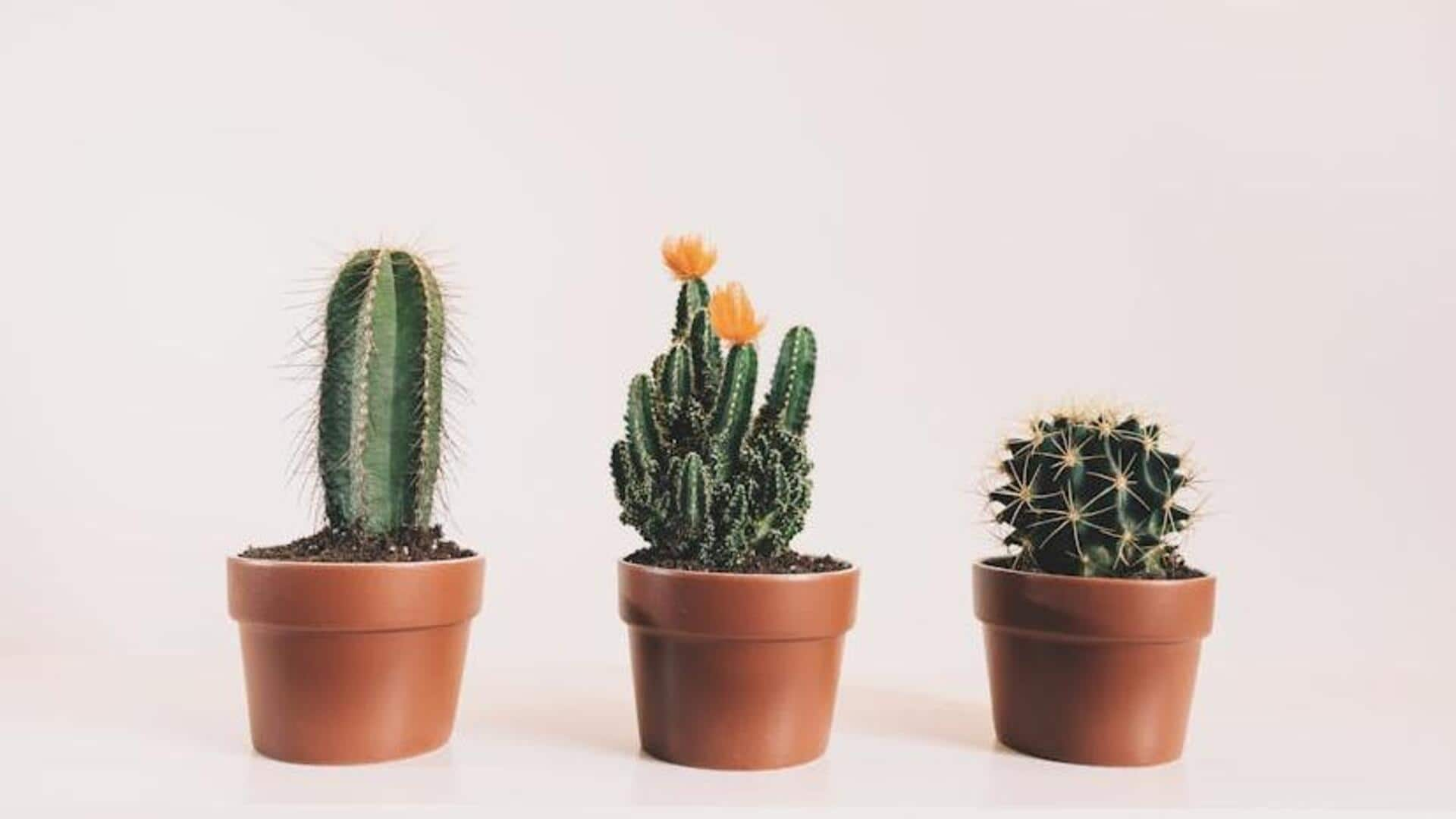
How to take care of your cacti at home
What's the story
Cacti are amazing desert plants that people love to have around their homes, because they are pretty and you don't have to water them every day. Even though they are tough, cacti need some special care to be really happy indoors or in your garden. This article gives you five of the most important tips for taking care of your cacti, so they stay healthy and beautiful.
Soil composition
Select the right soil mix
Cacti need well-draining soil to prevent root rot, which is a common issue for these drought-tolerant plants. A perfect soil mix is one part regular potting soil and one part each of sand, perlite, and pumice. This particular mix allows for rapid water drainage but also retains enough moisture to sustain the plants, striking a balance that's vital for their health and growth.
Sun exposure
Provide ample sunlight
Sunlight is key for cacti, as it replicates their native desert environment. Position your cactus near a south-facing window where it can get a minimum of six hours of direct sunlight each day. If natural light is insufficient, a grow light can be used to fulfill the plant's light needs and encourage healthy growth.
Irrigation technique
Water wisely
The most common mistake people make with cacti is overwatering. These desert plants should only be watered when their soil is bone dry. In summer, this means watering every two to three weeks. In winter, you should water even less frequently - once a month or less. Never let water sit in the pot's saucer. It can lead to root diseases.
Nutrient addition
Fertilize sparingly
Cacti appreciate a little extra nourishment during their active growing season in spring and summer. Apply a balanced fertilizer at half strength every four weeks from April to September to support healthy growth. Refrain from fertilizing in fall and winter as most cacti go dormant and won't benefit from extra nutrients.
Climate control
Monitor temperature and humidity
Cacti flourish in daytime temperatures of 70 degrees Fahrenheit to 85 degrees Fahrenheit, with cooler nights between 50 degrees Fahrenheit and 65 degrees Fahrenheit being ideal. They prefer low humidity as excess moisture can cause fungal diseases. If the indoor air is extremely dry, a light misting can help but be careful not to overdo it.